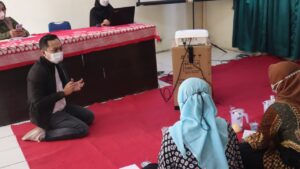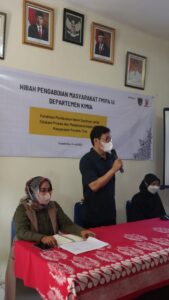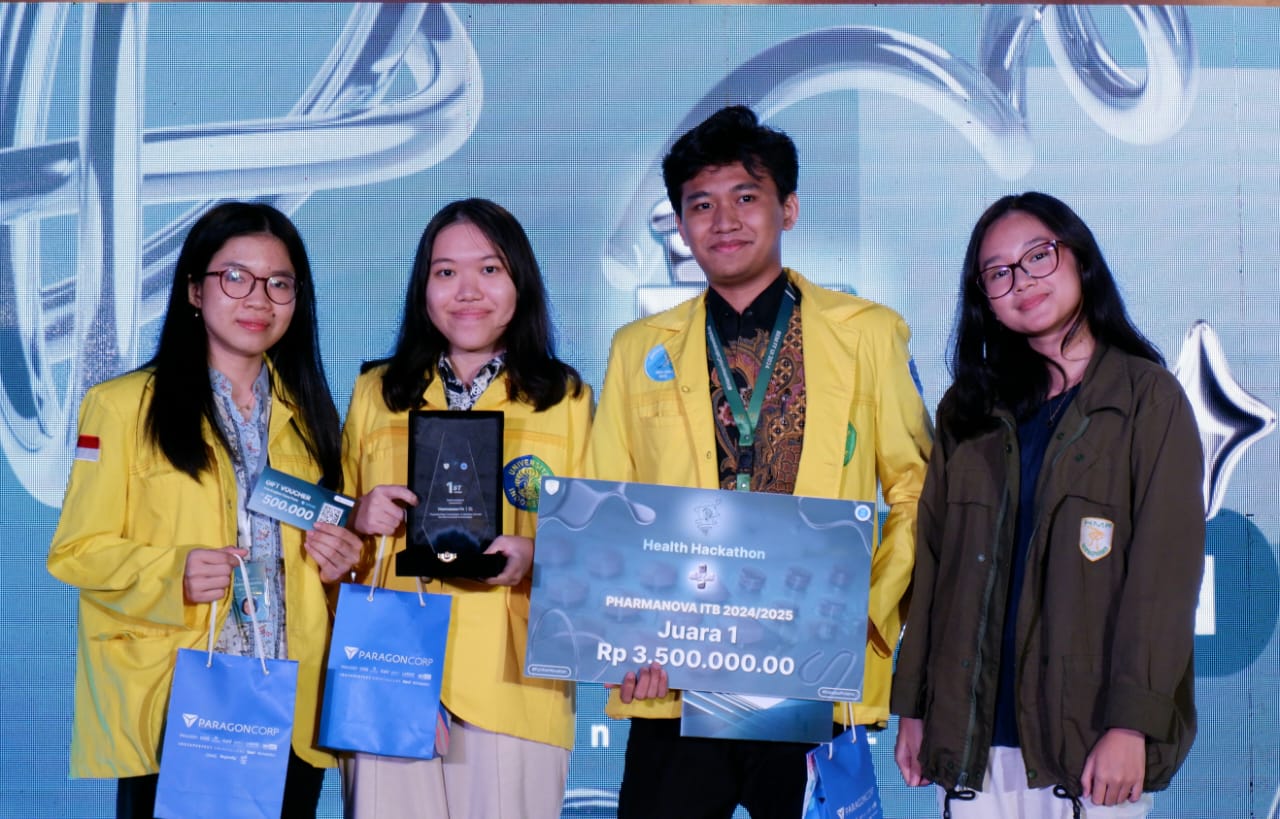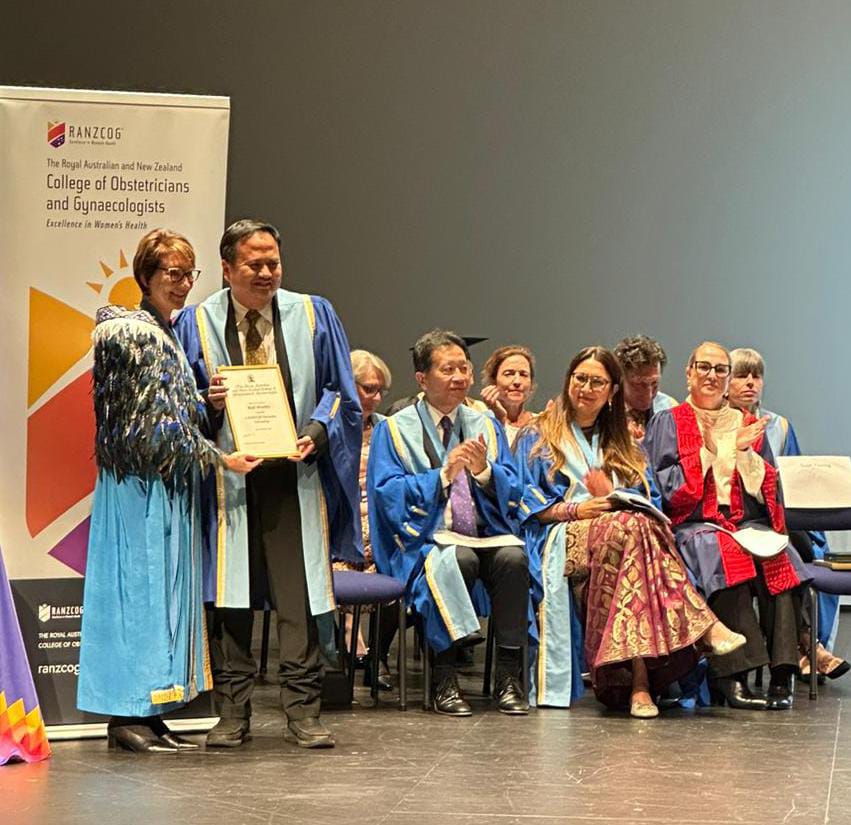
The Faculty of Mathematics and Natural Sciences, Universitas Indonesia (FMNS UI) organized a community service activity at Pondok Cina Village Hall, Depok. This community service, which is part of a series of grant activities provided by the faculty, provides training and education related to the manufacturing process and working mechanism of hand sanitizers to the surrounding community.
Head of the Chemistry Department of FMNS UI Asep Saefumillah, M.Si., Ph.D., explained that this community service program is a form of UI’s concern in order to implement the Tri Dharma of Higher Education. The purpose of the community service is to provide insight and knowledge to residents about the process of making effective hand sanitizers independently and how they work in killing virus particles.
“This education aims to make the people of Pondok Cina Village able to understand how to make hand sanitizers independently so that if the virus pandemic reappears, they are better prepared,” said Asep on Sunday (24/07).
In this activity, the Department of Chemistry provides complete facilities in the form of equipment and materials needed. The tools and materials provided include a 1 L glass container, spatula, hand blender, 50 grams of gel, 400 ml ethanol, 80 ml water, and 2 ml fragrance.
Accompanied directly by the head of the community service team Dr. rer. nat. Agustino Zulys, M.Sc., the activity involving 30 participants was conducive and fun. The team leader explained the process of making hand sanitizer which begins with putting the gel into a container, then mixed with 200 ml of alcohol. All ingredients are stirred well using a hand blender until it becomes a homogeneous mixture.
The next process is to add and stir well the water and remaining alcohol. Finally, the team recommends adding fragrance to the mix of ingredients so that the resulting hand sanitizer not only smells of alcohol but also has a distinctive scent.
“That way, all of you can use the hand sanitizer that has been made,” said team leader, Dr. rer. nat. Agustino Zulys, M.Sc. Before the training began, the community first filled out a pre-test to measure the participants’ knowledge about hand sanitizer.
Furthermore, the material presentation on the definition, work methods, uses, materials and uses, to the process of making hand sanitizers was delivered by Dr. Munawar Khalil. He explained that hand sanitizer is a practical liquid hand sanitizer that can be used anywhere to inhibit or kill microorganisms on living tissue. There are two types of hand sanitizers commonly used, those containing alcohol and those that do not contain alcohol.
“Hand sanitizers with alcohol content usually use ethanol, isopropanol, and n-propanol compounds as active ingredients. While those that do not contain alcohol usually use quaternary ammonium compounds, benzalkonium chloride, chlorhexidine, iodine, and triclosan as active ingredients,” said the UI Director of Research and Development.
Alcoholic hand sanitizers according to the World Health Organization (WHO) recommendations require a 70% concentration that has been dissolved with other chemicals. “This means that 70% has been dissolved with perfume water, and the like, the alcohol content value must be 70%. No more and no less. If the concentration exceeds or is less than 70%, the effectiveness of the hand sanitizer is reduced in killing the virus,” he said.
Dr. Munawar urged participants to use hand sanitizer properly. It starts from the surface of the palm and the back of the hand, spreading thoroughly on the hand to between the fingers, and most importantly letting the hand sanitizer dry for 20 – 30 seconds before continuing daily activities. Meanwhile, ethanol and alcohol-based hand sanitizers require special attention so as not to trigger work accidents that can harm themselves and others.
Dr. Munawar warned of the dangers of ethanol liquid if one is negligent in using it. “Ethanol is a flammable liquid. Therefore, keep ethanol away from sparks. And if ethanol hits the eyes, it can cause eye irritation,” he said. Another thing participants need to know about hand sanitizer is how it works.
The inorganic chemistry expert of FMNS UI explained how the hand sanitizer works as follows: first, when corona virus particles stick to the skin surface, the virus membrane fuses with the human cell membrane, the virus then reproduces itself in the human body, the function of alcohol in this case works to break down the virus envelope, so that the viral RNA in the virus envelope becomes separated and destroyed. Finally, the microorganism, which in this case is a virus, does not develop and dies. Before the event was dismissed, residents were asked to fill out a post-test again to measure the participants’ understanding of the training material.

It is planned that the Department of Chemistry will again hold two other community service activities. The two community service projects that will run later are education on the importance of nutritional intake and the process of food metabolism, as well as socialization of competency improvement to teachers.



